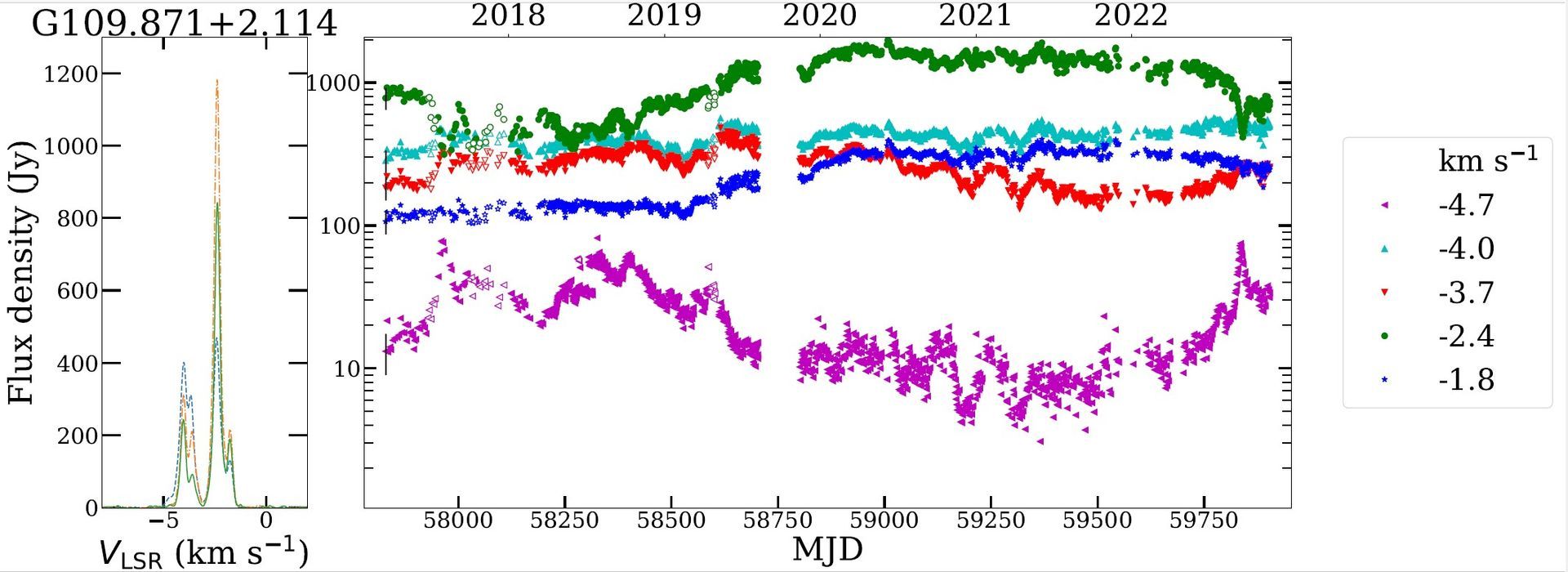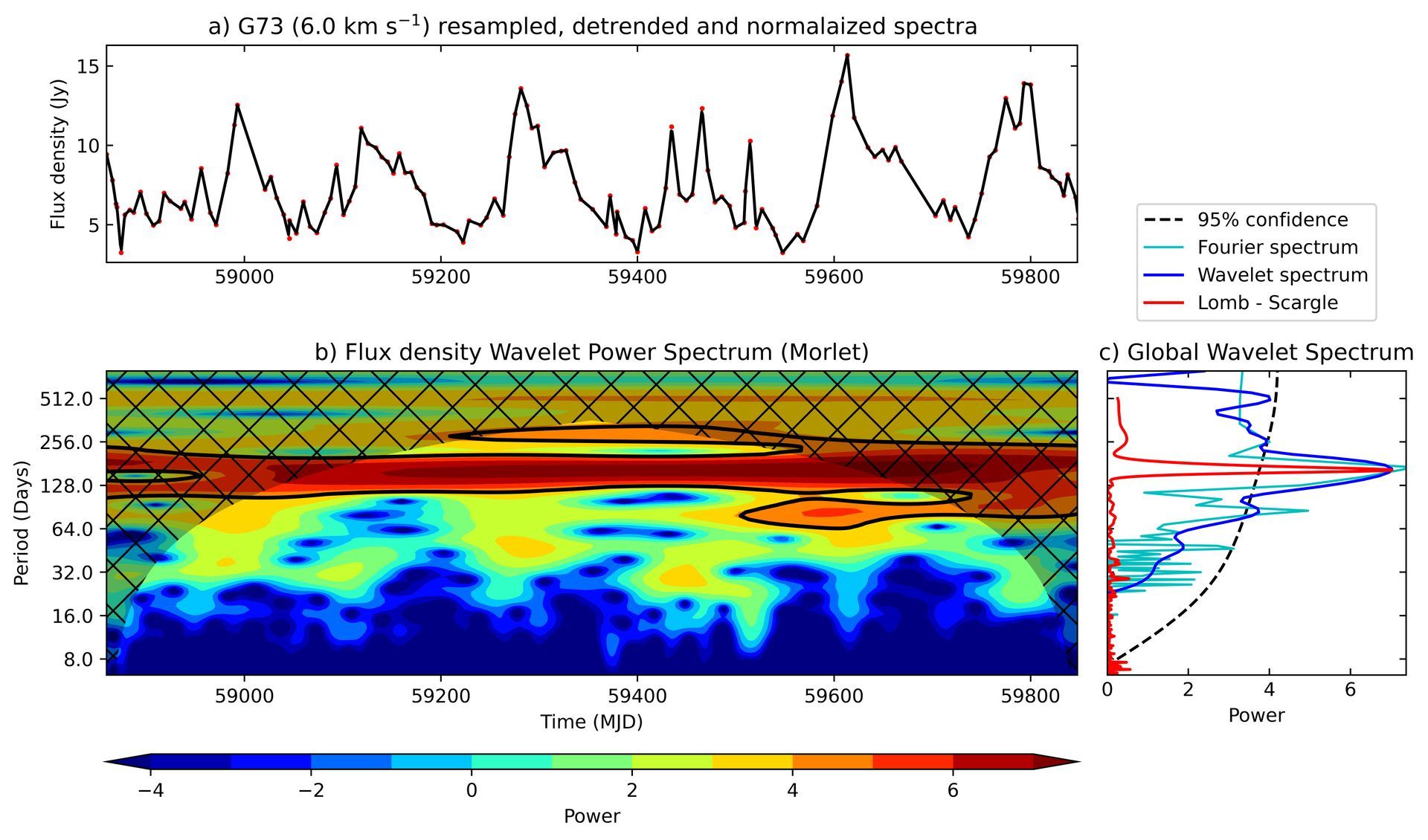This web page is created within BALTICS project funded from the European Union’s Horizon2020 Research and Innovation Programme under grant agreement No.692257.
A new publication in the prestigious journal "Monthly Notices of the Royal Astronomical Society"
November 15, 2023
Science is currently unable to fully explain the formation of stars with a mass exceeding 8 Suns. Optical observation of the birth of stars is very challenging, as these processes happen deep in the centre of dark nebulae. However, radio waves are able to see into the process of star formation. For observation, it is especially useful to use astrophysical masers (a maser is a laser that emits microwave radiation). 6,7 GHz methanol (methyl alcohol) masers are seen exclusively near massive stars in the process of forming.
Methanol masers situated in 42 star-forming regions of massive stars have been regularly monitored by VIRAC researchers Artis Aberfelds, Jānis Šteinbergs, Ivars Šmelds, Ross A. Burns by using Irbene radio telescopes since spring 2017. These observations are one of the first and largest programmes of scientific observation done using the Irbene radio telescopes. In total, over 21 thousand observations have been collected in the span of 5 years.
Changes in maser luminosity were aggregated into time series, in which powerful and chaotic changes in brightness can be seen. As an example, as is visible in Figure 1, where maser variations from one source are shown, the simultaneous variations in several components, which are opposite to the variations in another component. The brightness of some sources periodically changes, an example being G73, shown in Figure 2. The changes observed in every source are unique, but they can be classified using a whole (superposition) made of simple types of variability.
The results we have acquired strongly support the hypothesis – the main cause of change in maser luminosity is changes in the radiation intensity caused by the formation of a massive new star. A long-term observation programme has shown the radio telescopes in Irbene to be capable tools.
These results have been compiled and published in Monthly Notices of the Royal Astronomical Society, a highly prestigious journal. The article is available for free at:




















